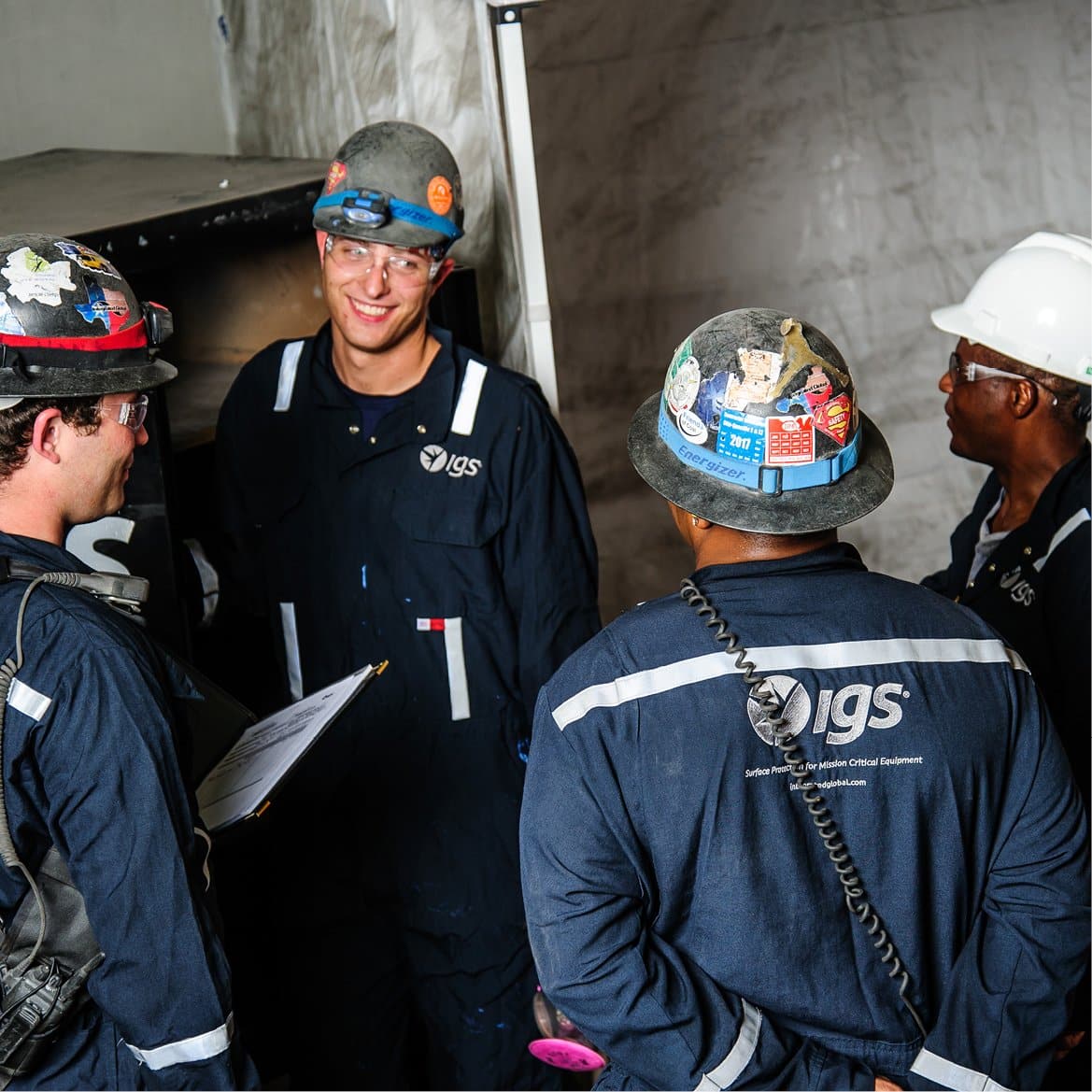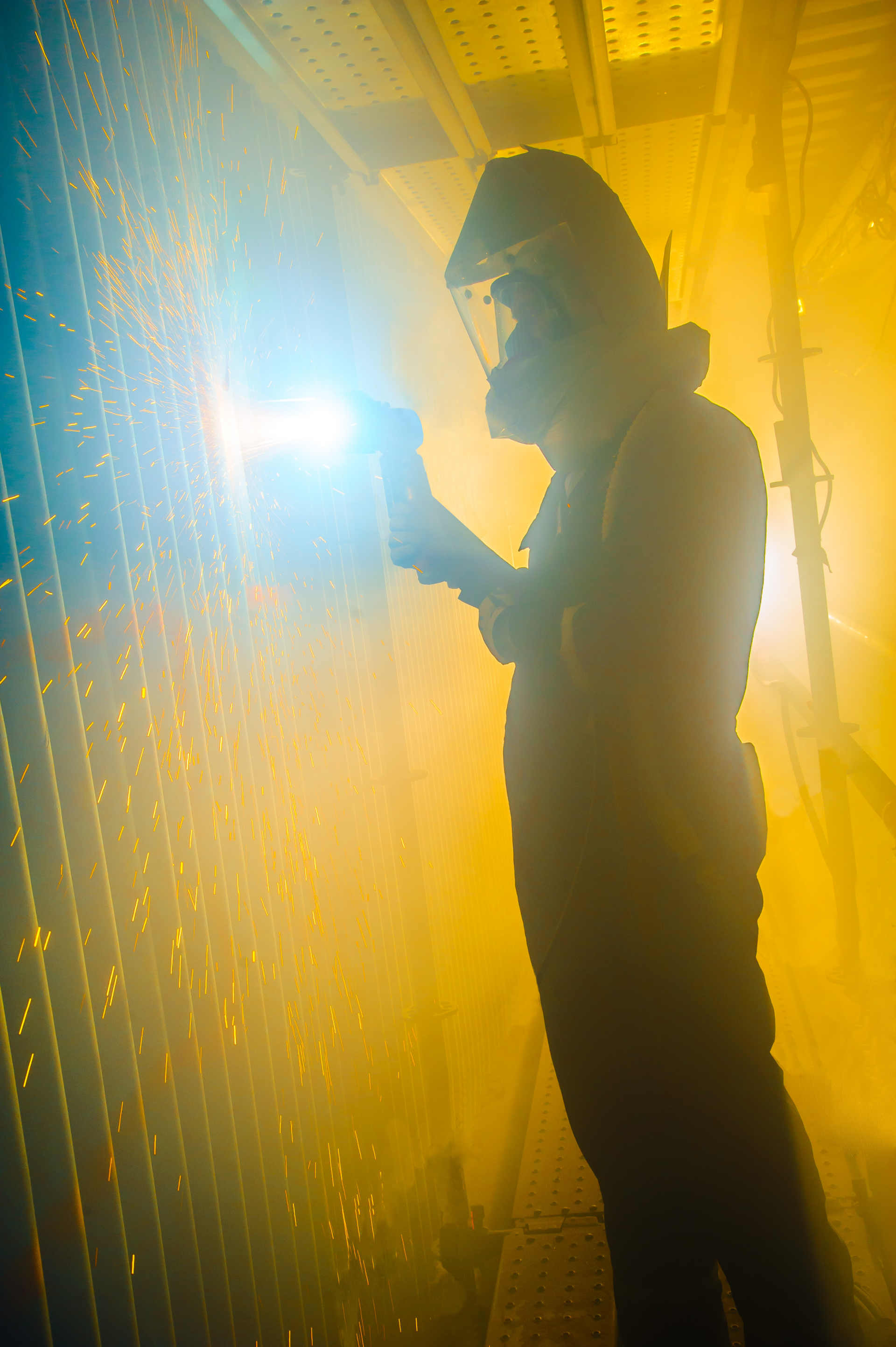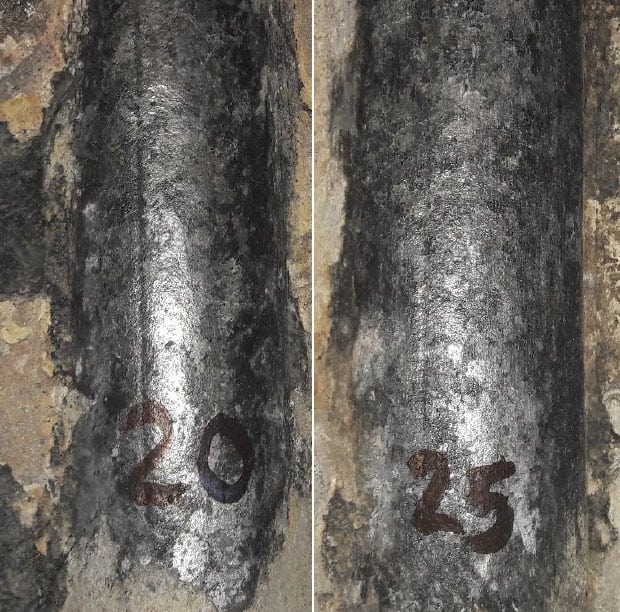Waste to Energy boilers with grate firing can suffer fireside corrosion of the furnace and boiler wall tubes. This can lead to reliability issues since the corrosion allowance from the initial design can quickly be reached and leaks can lead to unexpected outages. OEMs typically protect most of the first pass with refractory limiting the heat exchange. Even these often suffer from degradation leading to tube corrosion and high maintenance costs. Alloy 625 weld overlay is now typically used to protect against corrosion above the refractory in the remaining first pass, often in the second pass, and sometimes even in the third pass. Superheaters, evaporators, and economizers can also be overlaid, shielded, and/or clad for protection against corrosion and often erosion.

Refractory was the first protection against corrosive flue gases, but limited heat exchange properties and thermal efficiency. Refractory alloys can be used but due to the excessive cost of such material, the main material used for building boilers is carbon steel or low alloyed steel. The implementation of a surface protection layer is the most cost-effective solution. Even a thin layer can deliver significant improvements in corrosion resistance.
The use of ceramic coating seems an attractive approach, however, the thermal expansion mismatch and the fragility of such a coating makes it unreliable. Ceramic coatings are more likely to crack than thermal spray coatings, or cladding, and corrosion can develop underneath the protective layer which can peel off and result in little remaining protection.
Without protection, carbon steel will rust in the presence of oxygen. This process will not stop since the corrosion layer is not protective unlike some other metals. The corrosion rate depends on many parameters: oxygen content, temperature, moisture, and other corrosion agents like chlorine, sulphur and alkali.
Boiler tubes are cooled with pressurized water or steam and heated up by corrosive combustion flue gases from about 1000°C down to around 250°C. Corrosion occurs at the tube surface which is typically the water temperature plus a gradient through the thickness between 40°C and 20°C. The skin temperature can also change with the build-up of ashes on the tube. Changing conditions typically make the corrosion process even more complex, therefore even more difficult to treat.

In the 1980’s the application of Alloy 625 using the weld overlay process created a new opportunity in corrosion protection. Despite significant costs, the weld overlay has been applied inside many Waste to Energy boilers.
The thermal conductivity of Alloy 625 is lower than carbon steel so too thick of a layer leads to higher surface temperatures unsuitable for corrosion mechanisms and lower heat exchange unsuitable for boiler performance. The application of a thin layer is limited by the welding process generating dilution with the base metal. This dilution alters the metallurgy of the alloy, making the cladding less corrosion resistant. The cost of this solution is mainly driven by the cost of the material, so thickness and metallurgy optimization is the target.

A protective layer can also be applied using thermal spray technology. Thermal spray technologies have been developed for more than 100 years but mainly for erosion protection. Indeed, most thermal spray processes leave some porosity in the applied materials which is crippling for a corrosion protection layer. The Spray & Fuse process helps, however the implement for onsite applications is unreliable and generates a lot of heat input to the structure, leading to stresses and distortions.
The benefit of High Velocity Thermal Spray is the application of a thin layer of material without dilution and a heat-affected zone (HAZ).
IGS High Velocity Thermal Spray (HVTS) processes ensure finely structured cladding, with an order of magnitude, lower permeability and greater homogeneity, to protect against corrosion. Changes in feedstock chemistry have further improved performance by significantly reducing stress, increasing bond strength, and mitigating oxide content. By addressing the root cause of these microstructural defects through the process and material chemistry, HVTS can be successfully employed in the field.
We work during shutdowns, with high production rates and low costs. As with welding and other cladding technologies, surface preparation, material, process and procedure criteria are defined in specifications. HVTS generates no Heat Affected Zone on the pressure parts and does not place residual stresses on the base metal since the temperature of the base metal remains low even without water in the boiler tubes.

IGS is the industry leader in on-site corrosion protection for mission critical equipment. We safely operate on site during turnarounds in partnership with our customers and their vendors.
We have performed more than 4,000 site projects and installed millions of square feet of reliable surface protection across the globe. Our customers avoid costly replacement without sacrificing long-term reliability of their boilers and vessels.
A waste to energy boiler was experiencing fireside corrosion. Shop applied Alloy 625 weld overlay was showing signs of premature accelerated degradation. IGS was contracted to apply an HVTS cladding on top of the weld overlay in situ to stop corrosion and ensure the reliable and safe operation of the boiler.
After 10 months in service, the IGS thermal spray solution had no defects. As a result, additional areas of degrading Alloy 625 were protected with HVTS, which shown excellent result after 4 years in service.
IGS is here to provide information, answer questions and create an effective solution for your needs.